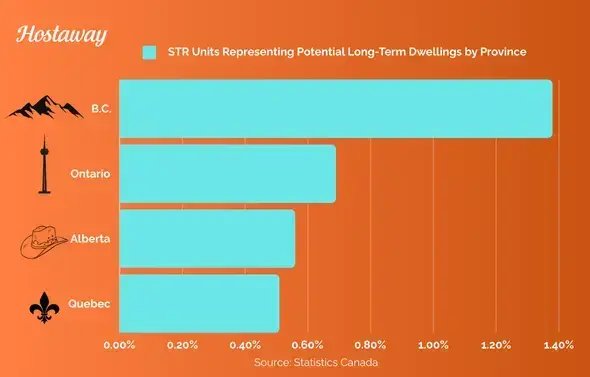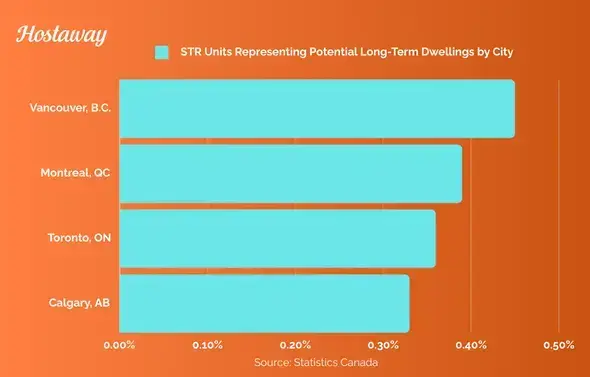What’s the Impact of STRs on Canada’s Housing Supply?
Home affordability in North America is a hot button issue. The median home price in the US has increased 27.8% since 2019. In Canada, the increase is 43.6%. Unless your wages have magically grown at the same rate as housing prices, the current economic reality means home ownership is becoming out of reach for many.
Economists point to a supply and demand imbalance wreaking havoc on the housing market. This is especially true in west coast cities like Seattle and Vancouver. There simply isn’t enough supply to match demand. Bring more supply online, and prices will fall, so goes the logic.
That’s why local regulators across the continent have put short-term rentals in their crosshairs. The presumption is that by forcing owners to convert their short-term rentals to long-term rentals, more supply will come online and lower prices.
But a recent report by Canada’s national statistics agency Stats Canada has poked some serious empirical holes in this presumption.

STRs with Long-Term Rental Potential Are Less Than 1% of Canada’s Housing Stock
Less than one percent (0.69%) of short-term rental units across Canada could potentially serve as long-term housing according to the report. British Columbia was the province with the highest potential long-term dwellings (PLTDs) at 1.2%, with Canada’s most populous province Ontario landing directly in line with the national average.
Although outliers in resort destinations like Whistler, Mont-Tremblant and Canmore do see a higher proportion of PLTDs (35%, 16.4% and 15% respectively), the overall picture painted by the report shows short-term rentals have a minuscule, if not negligible, impact on housing supply.

STR Stats Similar in City Centres
The paltry proportion of PTLDs is true in Canada’s major urban centres as well. As of 2021, the last year for which data was available, the percentage of PTLDs in the metro regions of Vancouver, Montreal and Toronto (Canada’s three largest cities) were 0.45%, 0.39% and 0.36% respectively.
And while the number of short-term rentals in Canada has certainly grown since 2021, a 2023 report from the Conference Board of Canada found “no compelling evidence” that Airbnb activity caused housing costs to increase.

Not All Short-Term Rentals Are Potential Long-Term Dwellings
The heavy-handed approach some regulators have taken misses a key nuance captured in the StatsCan report. Not all short-term rentals are created equal, have the same purpose or potential for long-term housing.
More specifically, while onerous regulations might result in some short-term rentals turning into long-term rentals and then rented on the open market, there are plenty of examples of STRs that represent new rental activity that otherwise would not have occurred.
Examples of STRs that aren’t PLTDs
Vacation home rented while owner lives in primary residence
STR listings for hotel rooms
Three-season cottages (all but winter)
Boats
Individual rooms within a residence
Student housing leased during academic year
Summer-specific rentals
STRs attracting “snow-birds”
Without taking these specific, fairly common, examples into account, regulators risk attacking net new rentals that would never actually become long-term rentals.
Multi-Faceted Problem, Multi-Faceted Solution
Pointing to a lack of supply is a convenient, if over-simplified, contributor to decreasing housing affordability. There is no denying that more supply is needed. But dealing with a problem as complex as the housing market will never be solved by addressing only one element of the issue.
The Stats Canada report, in its concluding thoughts, acknowledges that multi-property owner investors, population growth, interest rates and financing are all major facets impacting housing affordability.
Governments need to take all of these factors into consideration when writing legislations, and not become, as some have, myopically focused on the impact of short-term rentals.
It’s a complex problem with complex solutions. And according to the latest data, short-term rentals are only a fraction of the problem.
